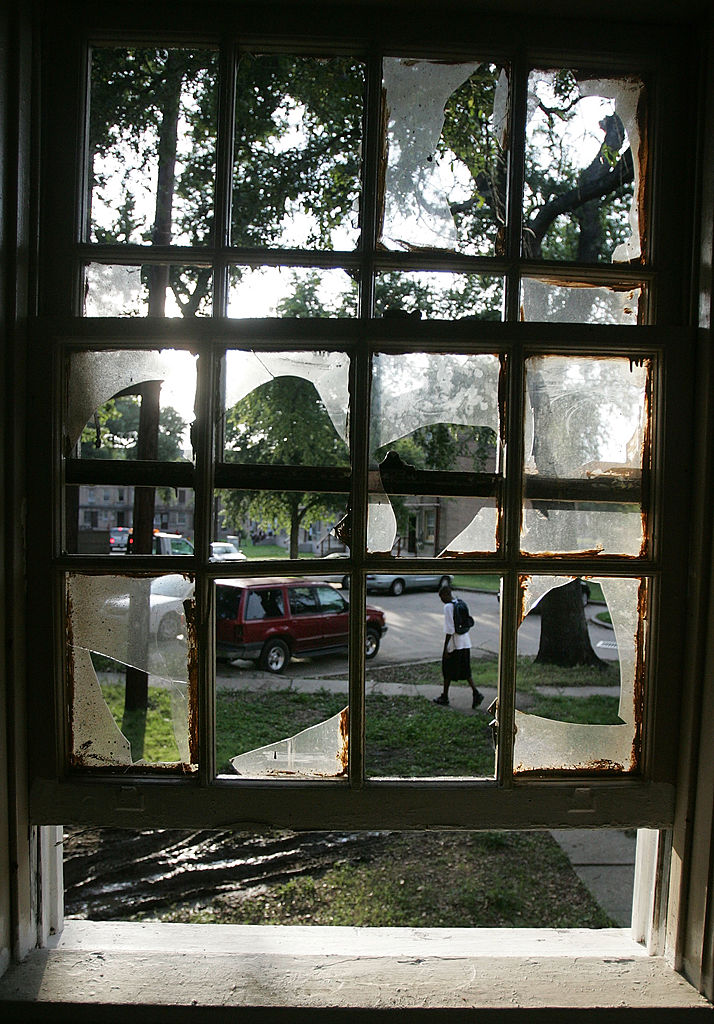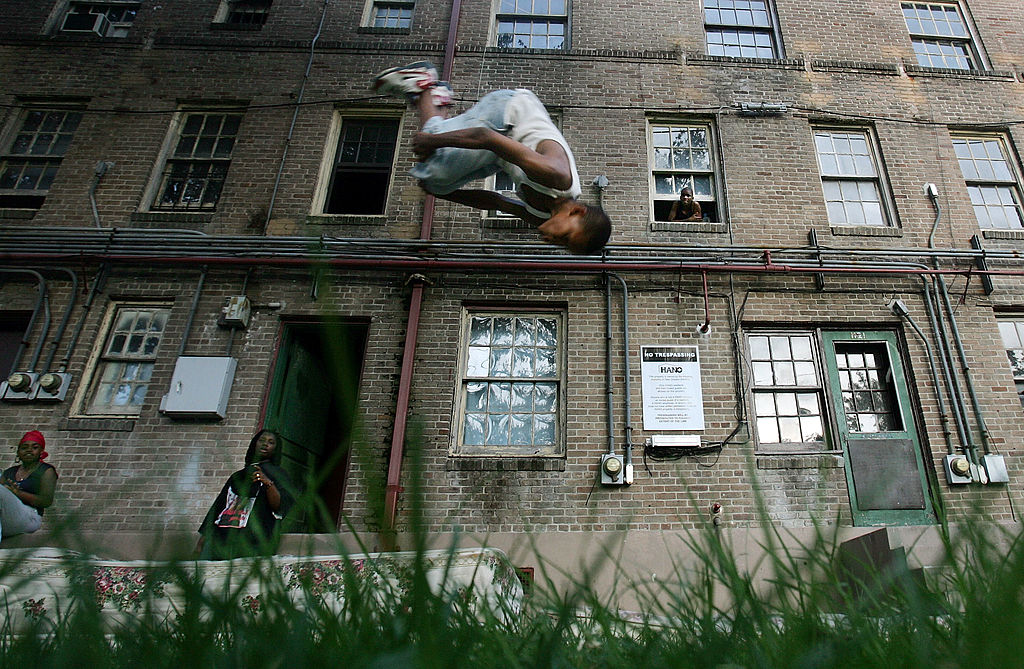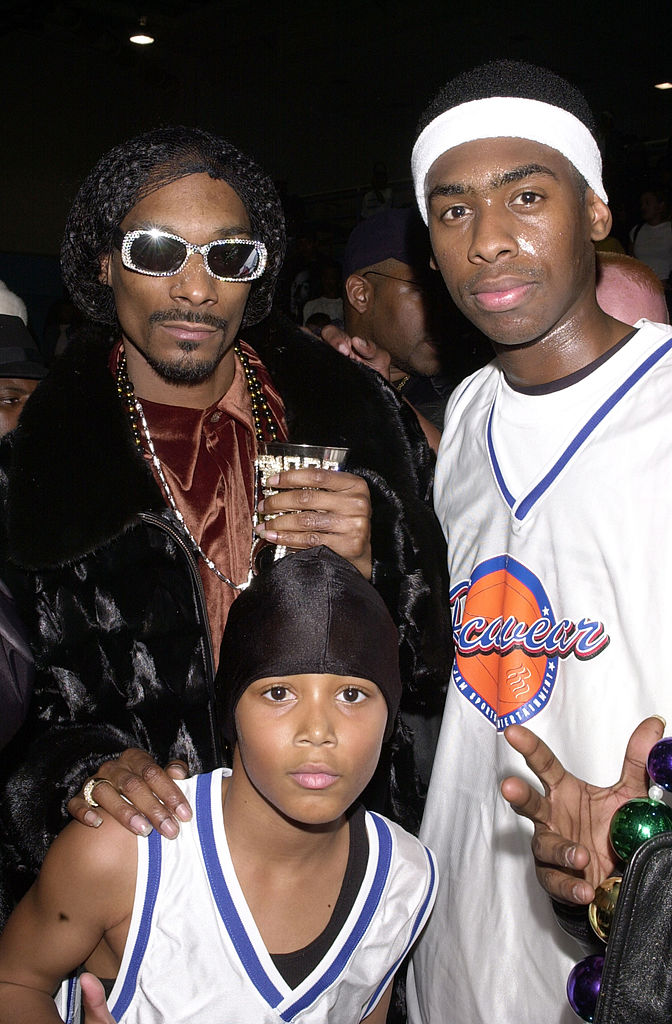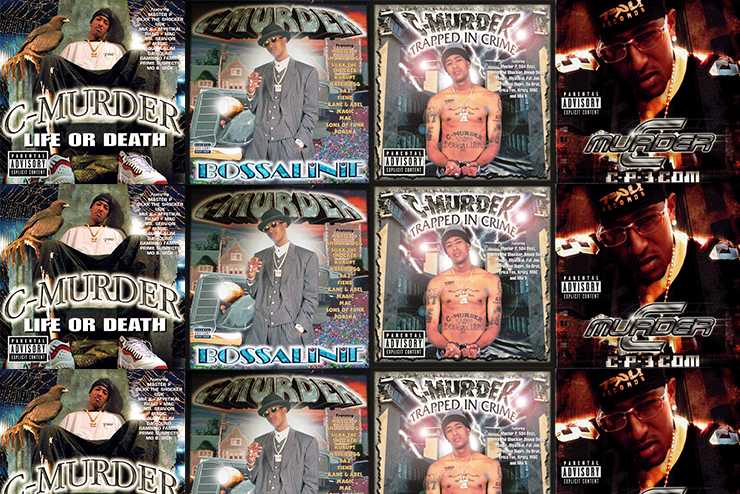Story
The Rise Of C-Murder: A Complete History

Atlanta rapper Trouble once declared that “real is rare,” a simple proclamation that holds profound significance in the rap game. Not the rap game as consumed by the mainstream, but the one built and developed on a grassroots level. Where aspiring artists are forced to adapt to their circumstances while keeping a level head. The threat of violence is never far and it’s not uncommon to see friends die before reaching adulthood. Respect must be earned; risk can manifest itself in myriad ways. Upon seeing footage of C-Murder walking through the notorious Calliope projects, a beloved pillar in a community left abandoned, it’s hard to dispute the rapper’s unflinching authenticity.
It’s a quality that many fans admire, but such admiration can be fickle. All too often a rapper is praised for being “real” only to be cast aside at the first sign of aggression. Nevermind that these behaviors are the product of one’s environment, where young men are forced to deal with untested PTSD on a daily basis; that’s not an attempt to justify the violence, but to understand where such impulses come from. For C-Murder, unapologetically himself until that fateful day in 2002, it was violent urges that ultimately proved to be his undoing. And in the process, the life of sixteen-year-old Stephen Thomas was lost in a devastating incident that has sparked more questions than answers. The story of C-Murder is one rife with moral complexities, with the American legal system standing fixed in the center of it. And it was Kim Kardashian of all people who once again raised awareness to the forgotten No Limit soldier, currently serving a life sentence for second-degree murder.

Mario Tama/Getty Images
In order to understand the context of C-Murder’s triumphant rise and catastrophic fall, one must start where it all began. The Calliope projects. Though it went on to be demolished and rebuilt in 2014, for a time Calliope was considered one of the deadliest places in the United States. In 2004, a documentary on C-Murder provided a thorough examination of the projects, painting a picture of the lifestyle and driving philosophies. It wasn’t uncommon to see heavy artillery displayed casually; one subject still nursed bullet wounds and a maimed thumb, reflecting on his scars with pride in his voice. Frequent validation of what’s real was a constant reminder of the values that defined the Calliope way of life; one need only watch the film for a few minutes to understand the importance of authenticity in the eyes of its residents. “I’m real with it,” declares one contributor. “I ain’t got all that jewelry but I got beaucoup ammo. You heard me? Beaucoup ammo. I ain’t about no bling-blingin’ — I’m about sting stingin’.”
The ramifications that such an environment can have on a developing mind are staggering. Young men forced to frequently navigate a tightrope lest volatility unfold, the consequences of which could potentially prove dire. Those unwilling to adapt, to defend themselves when provocation arises may lose more than their pride. Consider that C-Murder not only managed to overcome the adversity of his environment, but to remain respected even after finding success in the rap game.

Mario Tama/Getty Images
That would not have been possible if a young Master P had not been hustling to distribute his early music through his Richmond-based record label called the “No Limit Record Shop.” As one of the only shops that would carry and sell gangsta rap, a rapidly rising genre at the time, P quickly found a lane for his then-struggling business. After realizing his own come-up hustling in New Orleans made for compelling material, P decided to try his hand at the craft. BET’s No Limit Chronicles covered his formative days as an emcee quite thoroughly, painting a picture of a young dreamer peddling raw tapes in a sea of refined and established competition. After his brother Kevin was killed back in the Calliope projects, P was determined to bring his other brothers — Corey Miller and Vyshonn “Silkk The Shocker” Miller — as far from that life as possible. Drawing his moniker from his time spent serving as a medic in the gulf war, C-Murder’s authenticity quickly translated to his lyrics. Diving headlong into P’s vision, C followed his brother to Richmond, California, putting in work until the label was able to return to New Orleans and set up a proper base camp.
Though it would be years before his debut solo album Life Or Death would arrive in 1998, C-Murder quickly distinguished himself as a fan favorite through his work on T.R.U’s projects. As No Limit’s momentum began to grow in the early nineties, culminating in a platinum album with 1997’s TRU To The Game, many were eager to see what C-Murder had to offer as a standalone artist. When the time finally came, Life Or Death did not disappoint. Riding the wave of momentum fueled by P’s unrelenting and highly prolific release calendar — not to mention the hype of the recent Snoop Dogg signing — C-Murder’s big drop moved an impressive 197,000 units in its first week. Boasting features from Master P, UGK, Silkk The Shocker, the album went a long way in establishing many of Murder’s defining qualities as an emcee.

Theo Wargo/WireImage/Getty Images
Namely his authenticity, rendered in songs like “A 2nd Chance.” In the opening bars, C-Murder spoke on his early days in the Calliope, his sincere reflections resonating with listeners. “Started off as a street thug, just hangin’ and thuggin,” he raps, in the opening bars. “’89 went to jail for druggin’ and muggin / Poppa please ain’t no fuckin’ way for me, Probation for 10 years don’t mean you’re free.” What his technique lacked in refinement he made up for in sheer intensity, leaving fans hanging on his every word; there are some who even felt he earned comparisons to 2Pac in that regard.
In fact, the entire No Limit movement drew appeal from its rawness, a quality that endured since those formative Master P tapes. Circling back to that early documentary highlighting C-Murder’s frequent returns to the Calliope, it was clear that though he recognized the need to pursue a higher purpose, he never turned his back on where he came from. It’s the reason his presence alongside Snoop Dogg on “Down For My N***az” imbued the anthem with such gravitas; it’s the reason why his 2000 studio album Trapped In Crime (a title that would unfortunately prove prophetic) went gold in a month after selling 156,000 copies in its first week. Unfortunately, C-Murder’s rapidly rising momentum and business ambition were grinded to a halt in 2001 after the rapper found himself embroiled in legal trouble.
On August 15th, 2001, reports indicate that the rapper was attempting to enter Club Raggs in Baton Rouge only to be denied entry by security. Following this, C-Murder allegedly pulled his gun and fired the weapon into the club. Though the gun malfunctioned, Murder ultimately managed to fire a shot into the floor before leaving in a SUV. An archived article from Billboard cites Baton Rouge Police Spokesman Cpl. Don Kelly, who specified that C-Murder had been issued a warrant for two counts of attempted first-degree murder and one count of illegal use of a weapon. At this time, he was in the middle of working on his fourth studio album CP-3.com, the release that would be final on No Limit. Though the future appeared uncertain for C-Murder, his name still carried weight in the mainstream eye; it should be noted, however, that CP-3.com only debuted at 45 on the Billboard charts, marking the lowest-selling album of his career.

Official artist artwork
Behind-the-scenes, Master P and C-Murder found themselves at odds over a philosophical difference. Unwilling to turn his back on the streets, C-Murder would frequently return to the Calliope projects, a place described in the recent No Limit Chronicles as “his environment.” The divide only grew following C’s arrest at Raggs, which seemed to strike P as an unwillingness to pursue the opportunities No Limit’s success had granted them. But as any documented video of C-Murder clearly indicates, the rapper had no intention of changing his ways. On January 12th, 2002, C-Murder would find himself involved in another violent altercation, this one taking place at The Platinum Club. For 16-year-old Steve Thomas, an aspiring rapper, it would prove fatal.
The account shared in the No Limit Chronicles, given by former Platinum Club security guard Darnell Jordan, paints the following picture. Upon accidentally brushing an unidentified man, Thomas found himself attacked. As the brawl escalated, Jordan explains that he saw Miller in the fight and attempted to pull him away from the fight. In the middle of the chaos, a gunshot rang off, hitting Steve Thomas in the heart and killing him. Jordan then reveals that following the shooting, he was taken to a police station and asked to identify a man in a picture without context. When he correctly points out C-Murder, he was asked to sign the back of the photo. He maintains that police never told him they were using this process to identify the potential shooter. C-Murder was arrested within a week on a charge of second-degree murder, to which he plead not guilty.
His trial officially began in September 2003, where Jordan proceeded to testify that it was, in fact C-Murder who pulled the trigger. Fifteen days later, the jury came to the conclusion that Miller was guilty, with Louisiana enacting a mandatory life sentence with every murder conviction. But despite the ironclad verdict, the cracks weren’t entirely invisible. In 2006, it came to light that some of the witnesses who had testified against C had “criminal history,” a fact that was not made known prior to the trial. As such, C-Murder’s team demanded a retrial and the judge granted permission. Following that, C-Murder was placed on house arrest for three years, with his second trial taking place in 2009.
Darnell Jordan returned once more, adamantly maintaining that it was C-Murder who pulled the trigger. With his testimony remaining unchanged, prosecutors began implementing the ugly practice of using a rapper’s lyrics as evidence of criminal activity; we’ve recently seen this implemented in the trial of Drakeo The Ruler, and many have criticized the slippery slope of using creative expression in a court of law. Unfortunately for C-Murder, he was once again found guilty by a jury of twelve, and his life sentence was once again renewed. It should be noted that the jury was not unanimous, but rather hung; ten in favor of guilt, two against. Unfortunately for C-Murder, Louisiana was the only state where a life sentence could be doled out without a unanimous jury. Though that practice was abolished in 2018, older cases would not be affected.
Adding further doubt to the veracity of C-Murder’s involvement was Darnell Jordan’s pivot. In July 2018, the security guard who helped put Corey Miller away recanted his statement. In No Limit Chronicles, Jordan explains that the process had a profound effect on his mental health, noting that he felt “tricked” by prosecutors. “I had to let everybody know, this man is innocent,” he declares, reiterating the claims he made two years ago. “I feel for Steve’s mother and father but I know for sure that the wrong guy is sitting in jail for their son’s murder.” Following this revelation, C-Murder’s team has been fighting against the state of Louisiana for a reversal of the sentence, despite the fact that a judge dismissed the possibility of a retrial in 2019.

Official Artist Artwork
Since then, there has been a renewed focus on C-Murder’s legal situation. Now 49, he has spent the greater part of the past twenty-years in jail. All the while, he has professed his innocence. In August of 2020, Kim Kardashian raised awareness to C-Murder’s situation, taking to Twitter to announce her new mission. “Since his trial, witnesses have recanted, new evidence of his potential innocence has come to light, and there are claims of jurors being pressured into voting to convict,” wrote Kim, on August 16th. “True justice for the young man requires that the person who actually killed him be held responsible and that Corey Miller be returned home to his kids.” Confirming that she would be teaming up with Monica to help free C-Murder, Master P expressed gratitude at the gesture — although, he was openly skeptical that Louisiana would ever allow his brother to walk free.
C-Murder took to Instagram to share his gratitude after his case had seen a renewed interest in the public eye. “After our call for the first time in 19 years, I slept!!” he wrote, thanking both Monica and Kardashian for their interest. “You can rest behind these walls but never do you actually sleep! My case had been stagnant for years!I am a man so it was no one’s responsibility to save me & no one attempted to! But when you trust God he will send his angels! This message is To any man or woman fighting the injustices of the system, DONT EVER GIVE UP!!!”
As of this moment, C-Murder continues to serve out his life sentence.
Story
Kieran James Honors Memory with “Part of the Grind”

Singer-songwriter Kieran James delivers a devastating new single with “Part of the Grind,” a track to tackle the tangled emotions behind loss and memory. A love letter penned to a close friend who faced severe cognitive decline, the song’s emotional heft feels universal yet heartbreakingly personal.
Set to delicate instrumentation and achingly sung vocals, “Part of the Grind” is both a lament and an honoring, a means of remembering while addressing the unavoidable cost of time and illness. His voice floats, leaving room for silence and the long pauses that so often come with grief. But in that silence, there is warmth as well, a refusal to let memory be totally extinguished.
Resilience is also implied in the song’s title, a reminder that even in heartbreak, life goes on and holding the memory of someone stays with the rhythm of everyday living. it’s an anthem for anyone who has ever looked on witnessing decline, mixed sorrow with love.
In Kieran James’s “Part of the Grind,” we hear music as well as go behind it. He gives us room feel, to mourn, and to honor. In the process, he turns private pain into something achingly universal, a song for everyone who has either loved or lost.
Story
Esthy glows up with joy on new anthem “light it up”

In her latest song, “light it up,” singer-songwriter and producer Esthy from LA brings a vibrant and uplifting vibe that feels like sunshine in musical form. By mixing elements of playful country with polished pop sounds, she creates a track that’s all about having fun and enjoying life.
Esthy’s singing truly shines, showcasing a lively and confident style. There’s a playful tone in her voice that makes the lyrics feel friendly and inviting, encouraging you to set aside your worries and immerse yourself in the moment.
“light it up” radiates energy and is lively and bright, featuring catchy guitar riffs and upbeat rhythms that draw you in right away. If you enjoy artists like Anne-Marie or OneRepublic, you’ll love this song, and Esthy adds her unique flair, making it special and memorable.
Esthy has a talent for creating catchy melodies, and with this one, you’ll find yourself humming throughout your day. Esthy is here to spread joy, inspire energy, and make music that connects with you instantly. This track is designed to remind you of your true unstoppable nature, and Esthy lights it up.
CLICK HERE TO STREAM Esthy’s “lights it up” on Spotify.
CONNECT WITH Esthy | Instagram | TikTok |
-

 Artist Spotlight3 days ago
Artist Spotlight3 days agoHope Easton channels tropical mischief and charm in new single “SexyReady”
-

 Artist Spotlight3 days ago
Artist Spotlight3 days agoSweetCandy! declares self-love and defiance on “UGLY”
-

 Artist Spotlight3 days ago
Artist Spotlight3 days agoBluntBrad Jr. finds calm ambition in the laid-back shine of “It’s All Good”
-

 Artist Spotlight3 days ago
Artist Spotlight3 days agoLavien drops a heartfelt Afrofusion plea that sticks to the soul with “Nobody”
-

 Artist Spotlight3 days ago
Artist Spotlight3 days agoLana Crow turns challenges into a celebration with “Laugh With You”
-

 Artist Spotlight4 days ago
Artist Spotlight4 days agoCircleKSK ignites an anime-metal collision on “UnBreakable Turn” ft. Anya J
-

 Artist Spotlight4 days ago
Artist Spotlight4 days agoRecc explores nostalgia and inner freedom in “Where the Wild thYngs Are”
-

 Artist Spotlight4 days ago
Artist Spotlight4 days agoAnnaBelle Swift delivers gentle hope and gratitude with new single “Heaven Sent”

